Ask Farmer Harland
Go ahead – Ask me a question.
A farming question.
Got a question about cattle? Like why cows stick their tongues up their noses? Or why every time we go near them they all pee and poop?
How about crops? Corn? Soybeans Wheat? Milo? Wanna know how a combine works? A tractor? A manure spreader?
Have a general question about farming practices? Or a specific one?
No question is stupid, I promise.
I dare ya’. Ask me a question.
~~~~~~~~~~~~~~~~~~~~~~~~~~~~~~~~~~~~~~~~~~~~~~~~~~
Go ahead, get in line now to ask your question. All you have to do is go to the comment section below and type in your question. Then Harland will answer your questions in the order they were received. No pushing and shoving now – form an orderly straight line.
Be ready with your questions and ask away.
~~~~~~~~~~~~~~~~~~~~~~~~~~~~~~~~~~~~~~~~~~~

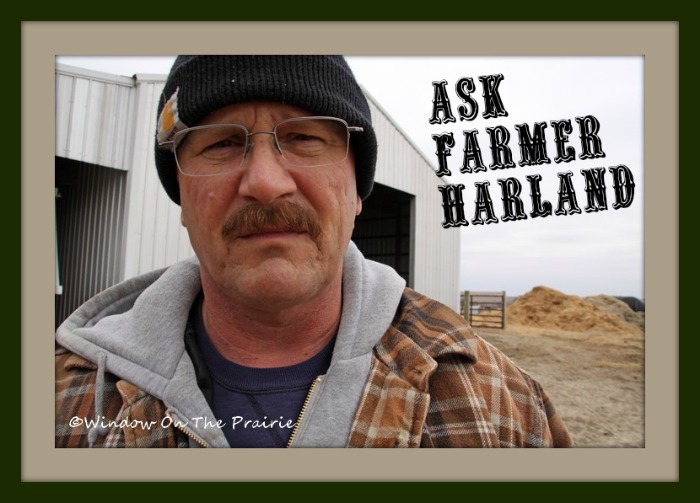


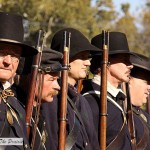


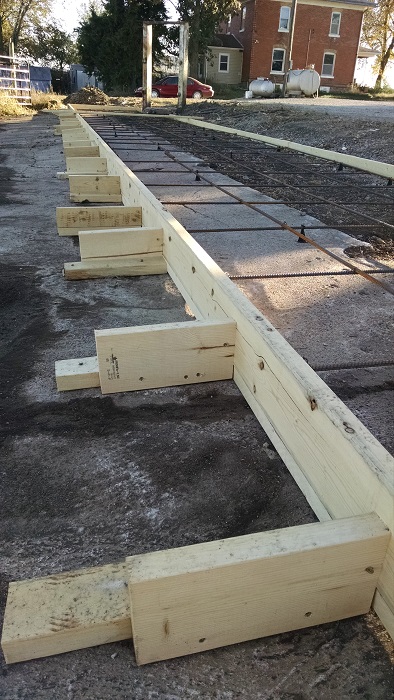
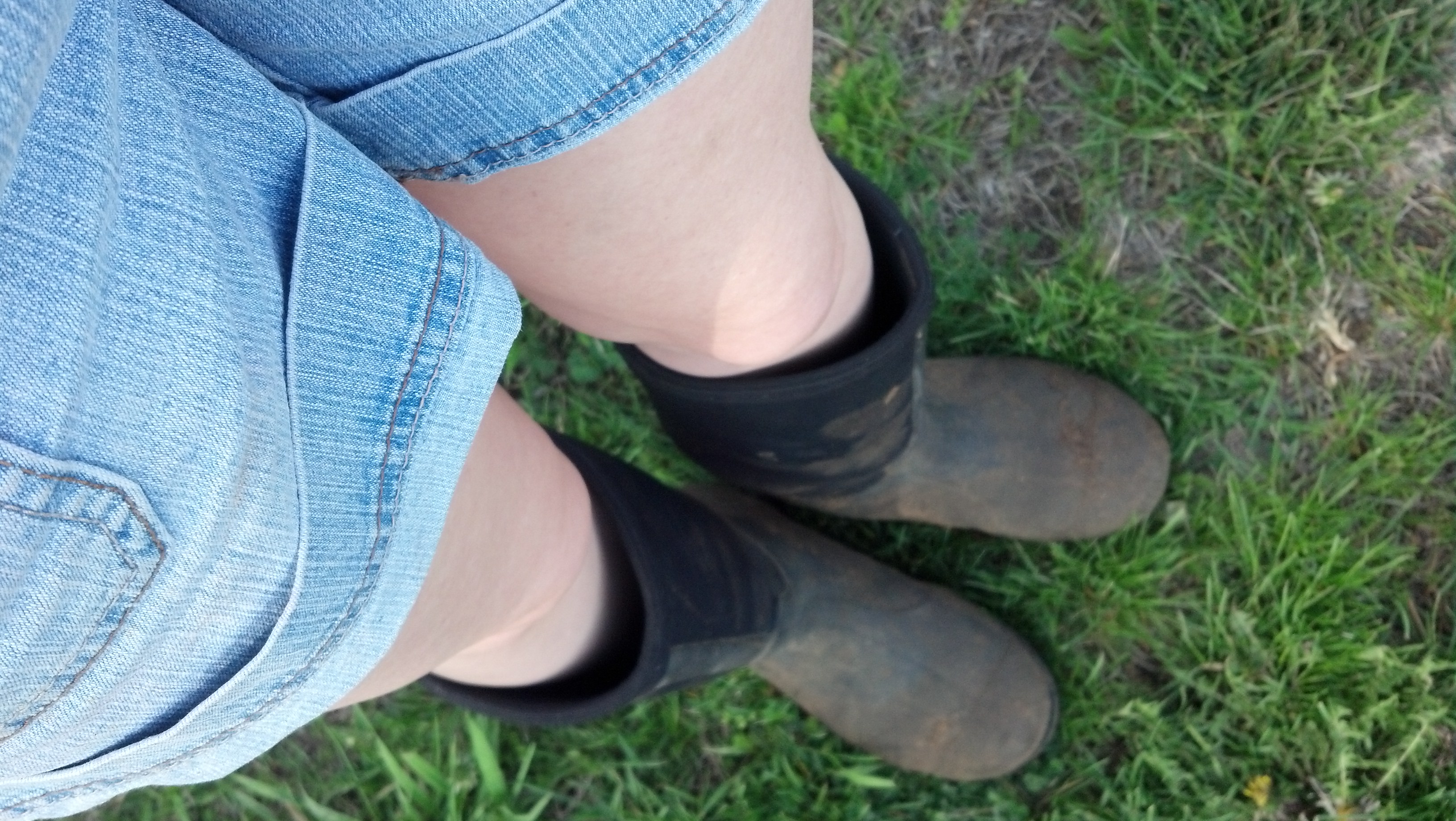
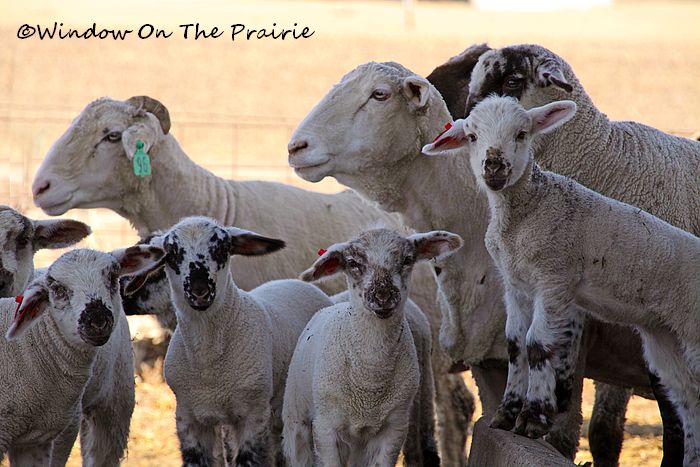
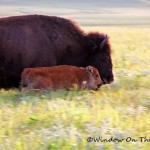
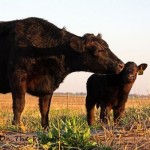



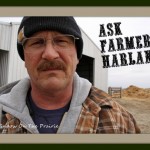




Have you always farmed?
Yes.
What do you and Suzanne like most about farming?
I like being outdoors, flexible hours and the lifestyle of living in the country compared to living in town.
Would you ever retire from farming and move away from Kansas?
I wouldn’t mind living in Southeastern Utah. I love that country. It really speaks to me. Moab is very commercial and touristy, but Monticello is down the road about 30 miles, and has remained largely a farming/ranching community. There’s still some breathtaking scenery near Monticello, but for whatever reason, that town hasn’t hopped on the tourism bandwagon and still retains that small town feel.
What is the most profitable crop in Kansas?
Right now, corn. Beans second. Wheat has been losing to corn and beans across the state for about the last ten years or more.
Would you rather grow crops or raise cattle?
Yes. But cattle diversify our operation.
So…if you have a cow/calf operation…and you sell the calves…how long do you keep the cows? We dairy farm, and we have some cows as old as 10+ years, but I’m not familiar with beef cattle.
10 years is getting old for a beef cow, too. We have some that are as old as 12 years, but those are good cows and it’s hard to part with them. Most big ranches routinely sell their cows at 8 to 10 years old. A cows teeth wear out over time, and they have a hard time keeping their body in condition as they can’t chew the grass too well without teeth. Beyond that, cows start to have hip problems when they get old. The animal just isn’t designed to live much more than 12-15 years, no matter how well you take care of them.
I heard on NPR today that Colorado is short of snow again this year. Are you expecting another dry year? Too little moisture is really hard on animals and crops and people who worry.
I was raised on a dry land farm that grew wheat, barley, field peas, and grass seed plus range cows, chickens, dogs and cats in North Central Idaho. I really enjoy watching farm life vicariously. It’s a great life but I always wanted to move to the city when I was growing up 🙂 I never thought I would move back but here I am although not on the farm. In fact we have very few farmers left in our area and when they retire I don’t think there will be any to take their places. The farmer’s sons have gone to work for companies that have a payday every two weeks and set hours.
We are very dry here, and across most of Kansas right now. If we don’t get some rains, it’s going to be a long summer. Drought tends to feed on itself, so everybody is pretty worried right now.
He certainly looks approachable in the photo! This should be interesting. (I know he loves being the center of attention, don’t let him tell you otherwise). LOL
Do you have to have training for the large farm equipment you drive and operate? Or, is it just trial and error when you first get the equipment? Have you ever been injured badly while operating one of those big things???
No training. OSHA rules don’t apply to farms with less than ten employees. You learn by trial and error. It’s actually as easy as driving a car down the road after you get used to it. Never been hurt driving equipment. It’s actually quite safe as long as you stay in the cab.
Thank for the invitation to ask questions. I wonder where you get the colostrum that you feed the baby calves that you have to bottle feed. You seem to always have it on hand. Is it in powdered form when you get it?
We order it from Valley Vet, http://www.valleyvet.com There are different brands. We use Clostrx brand. It comes as a powder in a sealed foil packet. We always keep some on hand during calving season. As a rule, I give all the calves born to first calf heifers a bag of Colsrx since the volume and quality of their colostrum is not on a par with that from older cows. On the calves born to regular cows, I feed them a bag if they get chilled, or if for any other reason they don’t get to nurse the cow right after birth.
Charolais(sp.) white cattle graze on the farm “next door.” Last week a black calf was born. Can you explain this, Harland?
I would guess the cow was bred by a black bull, probably by accident. Another possibility is that the cow has some Angus (or other black breed) in her background, and this shows up in her calf occasionally.
What do you see for the future of family farming in America?
I think there will always be family farms as long as family farms are willing to keep up with technology and remain competitive economically. The trend towards “vertical integration” only works when there is an economic advantage. We’ve seen this in the poultry industry, and to great extent in the pork industry where the food processor companies own the animals from beginning to end. This hasn’t happened in the cow-calf industry, probably because of the vast amounts of land that are required to produce beef cattle. Same for crops like corn, wheat, soybeans, etc.
Is it difficult to transition between Farmer Harland, Honorable Judge Harland and Husband Harland? Does your wife Suzanne ever influence your position?
Thank you for sharing your adventures with us!
It’s part of the job. Experience helps. And farming is seasonal, so to a certain extent you can plan and anticipate work load. Yes, Suzanne has influence on decisions around here.
How do you feel about commercial farming in Kansas and what’s your favorite meal of Suzanne’s to eat after a day in the fields.
I would like to see family farming continue. I think this is best in terms of our culture and rural communities. But I have to be realistic. Family farming will only continue as long as it is economically feasible. I don’t really have a favorite meal. Everything she makes is good!
Judge Harland? Didn’t know about that one. I do know Photographer Harland though and he’s quite talented. My question is why DO cows stick their tongues up their noses?
Cows stick their tongues up their noses because they don’t have pockets or fingers. Without fingers they can’t pick their noses and without pockets they can’t carry hankies.
Oh, Harland, I am absolutely cracking up at this one!!
Hope you don’t mind me asking another question… well make that two questions. It seems you do all the work by yourself. Do you ever have hired help? I saw on one occassion you had help in a late night delivery of a calf. How many acres do you have in your agricultural plantings?(not cattle range).
I do most of the work myself. Suzanne helps when she can. For jobs like harvest, I hire a retired farmer to drive the truck when needed. For big jobs, like working cattle, I hire either my brother or a nephew for the day. There’s also mutual aid among neighbors, each helping one another in an emergency. We farm about 800 acres of cropland.
Do you think there is any future for organic farming (crops and cattle)on a large scale or do you feel is it cost prohibitive, for both the farmer and the consumer?
I think there will be a market for organic products, but I doubt it will ever reach or surpass mainstream agriculture. It is a niche market. There is a segment of consumers who is both willing and able to pay more for organic produce. As long as they feel there is a benefit and as long as they have the means to do so, they will buy organic. And as long as there is a market, there will be an opportunity for a few growers to produce for that market.
Have you applied anhydrous to the fields yet? If not, when? When will you start to plant the corn and soybeans?
Anhydrous Ammonia was applied last fall. We started planting corn on Friday. We’ll probably plant soybeans starting in early May.
Does it make a difference in how beef tastes in what you feed them ?
I Poultry meet tough if it’s an older bird.
Does that apply to beef too ?
I live around the Yakima Valley in Washington State.
They grow a lot of Hopps & it’s really interesting to see how it’s grown.
Do they grow any there ?
1–Yes. Generally the beef from cattle fed grain has more marbling than those fed grass. But there is a niche market for grass fed beef for consumers who believe it a more healthy food than grain fed beef.
2–Yes, the same is generally true of beef. But if the beef is made into hamburger, you’d be hard pressed to tell what the age of the animal was.
3–There are no Hopps grown this far south, as far as I know. There might be some home brewers growing hopps in their gardens, but you don’t see it growing in fields around here. I remember seeing fields of Hopps in Montana years ago. Couldn’t figure out what the crop was and had to ask.
oops ,
Meant to write I have heard poultry meat is tough if bird is old..
How did you get into the farming business, meaning were you raised on a farm?
Yes, I was raised on the farm. I’ve been farming for 27 years.
Anhydrous Ammonia … fertilizer? liquid?
It is a liquid under pressure. Like LP gas, it is a gas at normal temperatures, so it has to be compressed to be a liquid at normal temperatures. It is injected into the soil as a liquid. Soil bacteria break Ammonia down to nitrogen. Nitrogen is a key nutrient which plants need.
I’m confused about all the articles about genetically modified seeds. Do you see problem with them?
GM seed gets a lot of press. Not all of it is informed. For the most part, GM seeds allow growers to produce more crop with less chemicals and insecticides. This is a good thing for both the grower and the environment. I don’t know of anybody who wants to go back to using the highly toxic soil applied insecticides that were used to control corn bore and corn root worms before corn was genetically modified to produce a natural toxin to protect itself from these pests. The latest GM corn grows with less water and is more drought resistant. Herbicide resistant crops allow the use of less toxic herbicides at lower rates than conventional varieties. Of course, something as powerful as GM needs to be regulated, and it is. As long as it is carefully regulated, I see no problem with GM technology.
It’s me again. Questions keep popping into my head. Thanks for all the answers. This time I have questions about fences. You must have miles of them. How often do you have to check all the fences and do you have special equipment to use in fence building or fence repairs?
Do you use metal or wooden posts? Do you have wire fences or do you use something like used oilfield pipe for fencing?
I usually check fence once a year, prior to turning cattle out into the pasture. There are various tools used in fencing. The most important are fencing pliers, wire steeples, tie wire, steel post driver and wire stretchers. With those tools you can fix most fence problems. For building barbed wire fence, you also need a post hole digger, spade, post hole jobbers and a post tamper. Depending on the fence, we sometimes use all steel fence posts, sometimes a mix of steel and wood, and sometimes all wood posts. Mixing a few wood posts in with “T” posts in pasture fencing makes a better fence since the wood posts are harder for the cows to push over. For cattle lots and crowding areas, wood posts give more strength than steel “T” fence posts. I have used steel pipe in these situations as well, but due to expense, steel pipe is usually used only in cattle working areas where it will take a lot of abuse. Barbed wire is still the most common material used for fencing. The exception is in cattle lots and working areas, where the extra strength of pipe justifies the added expense of that sort of fencing.
I just saw the pictures from your wifes blog about “the prisoner” and her calf. In the pictures of the calf romping aroung I noticed something on one of the posts for the fence that looks like a solar panel. Is it? Do you use solar panels at all?
Yes. The solar panel you saw was on an electric fence charger, used to keep the cows in the pasture. We also use solar powered water pumps to supply water to the cattle in one pasture.
Do you have or have you ever had silos? Do the metal grain bins take the place of silos?
Silos seem to be in the category of one room school buildings and small county churches,a disappearing landmark.
No silos. We do have grain bins. Grain bins store dry grain. Upright silos store ensilage which is fermented chopped corn stalks. Bunker silos are cheaper and have more capacity than upright silos so bunker silos are more common now days.
Regarding the grass burning – can you please explain “downwind” and “upwind”. I’ve always gotten confused when I read this expression. Say I’m standing facing a deer who is 100 feet away from me and the wind is blowing into My face… Am I “upwind” of the deer? Is he “downwind” of me? In other words, I would smell him (say if I were another deer) before he could smell me, because of wind direction? I’ve had many lively discussions with my husband about this. He says I’m wrong.
You are upwind of an object when it is blowing past you to the object. You are downwind from an object when the wind is bowing past the object towards you. You can smell the object when you are downwind from the object.
Does the burning process substitute for fertilizing and lime on the native grass land?
Burning of last year’s growth does release nutrients that would otherwise be tied up for a while, but another benefit is the control of trees which would otherwise take over.
Harland, How has the snow and cold affected the corn you have planted? I imagine that the corn hasn’t had time to emerge yet.
Hey Jay, Been wanting to get in touch with you – I have a few questions about our house and was wondering if you might have the answers:Do you know when our house was built? When did the original house that sat there burn? When was our house moved to the old house’s foundation? Thanks Jay, and have a great day! Suzanne
Hey Suzanne, The old house burned when my dad was a teenager. He was born Nov 1907 and think it must have been around 1924. The fire happened at night. My dad said that he crawled out of the burning house to get below the smoke and then rode a horse bareback to the neighbors, in his long johns, to the north to call the Morrill fire department. The only thing that was saved out of the house was a fancy wood chair that I have. It was near a window and they reached in and grabbed it.
The story on the fire is that my grandma was ironing clothes and heard a crackling sound. They didn’t know what it was, so nothing was done. (They had a “Delco” electric system that supplied electricity to the house.}
The current house was a tenet house that sat north of the current site, it was somewhere near the old cave that is in the pasture. I don’t know when the current house was built, but it had to be before 1924. After to old house burned, my dad, his sister and their folks moved to Florida for a year. I think the house was moved while they were gone but don’t know for sure, it could have been after they returned. The old house had a bigger footprint than the current house.
The current house had a front entrance door on the west side of the house at the northwest corner. My grandfather had that entrance closed sometime in the late 1940s. My grandfather added the dormers the same time as this door was closed. There was also a door in the middle of the south side into the dining room. It was removed when the south room was added by my folks. There was also a door into the kitchen and it was eliminated when the south room was added.
Let me know if you have other questions. I’ll do the best I can.
PS I enjoy you blog. Keep up the good work.
Wow, Thanks Jay! I have a few more questions, but I’ll send you an email this afternoon! Thanks!
Suzanne, I’d be interested in learning more about your house, too! It’s fascinating! Maybe others would also be interested… I don’t know much at all about ours, but it’s not near as old as yours, having been built in 1947. It was sort of a “company” house, built by the logging company that used to be here.
Noooo…..we want to know more about the house too.
Thank you Jay! I have some more questions:
The Delco electric system – was that one of those deals where every house had it’s own generator?
And I figured the older house was bigger because there’s what looks like part of a foundation extending out in a square from the east part of our house. Would have loved to have seen how our house was moved. How did that do it in those days?
A few years ago when we re-papered the walls in the “dining room” we found where the old door on the south side was filled in. We also could see where one of those old telephones hung on the wall next to the old door.
As I often do with older homes, I wonder about the women who came before me in this house and I often think about Pearl, Dessa, Alta, and your mother, and wonder what they were like.
Thanks Jay, and have a great day!
Some have a short sprout but that’s all. May have to replant. I’ve never had corn wait this long to come up.
Suzanne’s recent post featuring the cows eating the hay bale sparked a question for me about cow breeds. What breed of cattle do you have – angus? I am familiar with black angus for beef, holstein for dairy, and jersey (for ?). Are there other breeds common in the U.S.?
Also, while your bulls and most of your cows are solid black, there are several calves with white coloring in their faces. Is this just due a recessive gene in someone’s dna or is this common to all beef cattle?
Our cattle are mostly Angus with some Angus-Hereford cross. In our herd, if the calves have some white on their head, they have some Hereford in their background.
Other common beef breeds in the US are Limousine, Horned Hereford, Polled Hereford, Simmental, Charolais, and Brahma.
Just watched the video of the cattle auction and your one lightest weight calf was sold alone. What was the reason for selling that one alone?
Different buyers want different size calves. The calves are sorted by sex and by weight at the sale barn so that the different buyers can buy the size and sex of calves that they want.
video of the cattle auction?
The video is at the end of this post: http://windowontheprairie.com/2011/02/21/cattle-auction/
The robins built on the head-gate. What is a head-gate?
Always something to learn about the farm/ranch.
It’s a gate that holds a cow’s head to restrain them if you have to work on them.
I’m a little confused about your farm.
Where you live do you call that a farm ?
Susan talks about the farm down the road.. so do you have two farms ?
Then I read about you trucking the cattle to a different place for the summer..
Do you have to go there & feed them every day or do they just eat the grass ?
Where we live is only an acreage of ten acres or so. We use one of the barns where we live and the small pasture to calve our heifers. That way we can keep a close eye on them. About a mile up the road is the farm where I grew up. That’s where the rest of the cattle spend every winter when they have their calves.
The cows eat only grass in summer. I check them at least once a week but that’s about all the care they need in summer.
Are the sunflowees still blooming in Kansas?
Just starting. Here’s a link to a farmer’s blog near Lawrence where they have a sunflower field. the farmer’s wife regularly updates and she states that this weekend and into next week the field will be in full bloom. The field is located at 24154 Stillwell Rd., Lawrence, KS. Click here for her site which also has directions to her field: http://krisgrinter.blogspot.com/
We bought a homestead parcel in SE Montana 5 years ago – we actually are Foresters and have our own business for over a decade, but we figure grass and trees are somewhat kinda the same so this shouldnt be too difficult..like a timber sale on a smaller scale but…no, its not…anyway now we are haying for the first time ourselves instead of leasing it out. we did buy our own old old old haying outfit, but it partially burned up in the wildfire last year along with the fields, so we didnt get a chance to hay for the first time last year but then when you think about it in actuality this is our second time haying because we did hay one field so our daughter could have her wedding on it (two weeks before the whole place went up in smoke, glad we paid that photographer to get pictures when the land was all pretty) i digress…usually… anyway, so our nice neighbor rancher to the north loaned us an old baler to match our now scorched mower and tractor to us. so far we have ran to town(s) only 7 times to replace/mend/buy new seals, bearings, mended belts etc. which is somewhat a vacay because the closest town to us is 45 miles away but we do get a chocolate malt each time so thats ok.
which leads me to ask this question to you –
is it okay if I move the truck when picking wild plums and forget to tell my husband where I left it when hes out haying in the field so that he has to walk in because its not where he left it? or is this grounds for divorce?
Thank you ahead of time for your reply!
-feral
I dunno. Is it OK to accidently lock your husband out in the rain and then not hear him knocking and beating on the door because you’ve gone to sleep? 🙂
so then its okay then that not only did i accidentily abandon him in a hayfield, but that I also locked him out too – just like you it was at night but it was HE who stepped outside onto the deck on a crisp winter Montana night thinking i would follow him to look at the stars, locking HIMSELF out while in the meanwhile i was sitting in our new whirlpool bath, jets running on full blast, wondering where the heck he was and why wasnt he jumping into the tub with me? It took me about a half hour to figure that one out…did you know boxers can go really crispy in montana winters?
ah so I have found my kindred rancher wife spirit! I will never go blameful again! “but she locked him out and WENT TO BED….” lol hugs to (((Suzanne)))
btw I only gave myself third degree burns once this time putting up plum jam… im getting better 😉
how many acres do you have? many machines and tractors have? how many cows do you have?
Do you farm anything in the interest of wildlife and habitat?
I try to leave some areas as cover for wildlife. This includes some margins along creeks which have trees and grasses. We have planted wind break trees as well. We don’t plant wildlife food plots or anything like that. I enjoy seeing wildlife, so I try to make the farm as ‘wildlife friendly’ as possible while keeping in mind that it is a commercial operation and it has to pay its own way.
I enjoyed reading on this page.
What’s Milo?
What do you feed your cows?
Do you let them out to feed on crops during the winter?
I have seen cows roaming the fields here in the Midwest.
When it is freezing cold how do you keep the cows warm?
Did you loose any cows during the polar vortex?
If you can not answer these ? It is o.k.
Nonetheless, this is a neat sight.
Thanks. 🙂
Milo is the common, generic name for hybrid grain sorghum. The plant originated in Africa, but it has been grown in the US for at least 100 years. In the 1950’s, plant breeders hybridized sorghum, which made the plant shorter, improved grain yield and standability, and it became the plant we recognize as milo today.
Our beef cows eat pasture grass in the spring in summer. In the fall and into winter, the cows forage on corn stalks, and they also eat any corn that was spilled during harvest. Since they have a rumin, they can actually digest corn stalks though I do supplement them with protein when they are on corn stalks. In mid to late winter, I feed the cows brome hay.
Here in Northeast Kansas, cows do fine on their own during winter, if they have protection from the wind during the coldest and windy weather. On a sunny, calm day, cows are actually quite comfortable even though the air temperature might be zero. Cows and yearling calves have an amazing hair coat. They start growing their winter coat in late fall, spurred I would guess by the days getting shorter. It doesn’t look like much, but it is a very dense matte of fine hair and it really does a good job of trapping a cow’s body heat. You can see this after a snow, when cows will have unmelted snow on their backs for up to a day after the snow has stopped. Baby calves are the exception, and they have to be protected from cold weather or else they will quickly chill and die. That’s why we don’t calve until March, when the worst of the winter weather is usually over with. From what I’ve read, the cows that died in that freak storm in late fall up in South Dakota hadn’t fully grown their winter coats yet. Also, they had 60 mph winds, with rain, then snow, and since most of the cattle were still out on summer pasture, there was little shelter for them to get out of the wind. I’ve never lost a cow to freezing to death here, but I can see how it could happen if you had a situation like they did up in South Dakota last fall.
In the 3rd installment of the recent posting about your hormonal heifer, I noticed she had the umbilical cord protruding from her body after delivery. Does that simply fall off and how long will it take? Is there a risk of infection to her, though not as severe, as with the concern over the calf’s stub?
You mean the afterbirth (placenta) hanging out of the heifer? She passes that in the first day or so. There is a danger that she may not pass the afterbirth and if that happens there is a risk of infection.
Hey Harland, in about a month my 10 year career in the Air Force will be comming to a close. We (my wife and I and 3 kids) want to buy some land and start a farm. What advice could you give a hard working, ambitious veteran when it comes to realizing this dream? I would appreciate any advice you could give (either positive or negative). Thanks, God Bless.
First, I assume you come from a farming background, and understand just how much time and effort goes into running a farm. There are no paid holidays, and if something needs done, you have to work even if you are sick. On the positive side, you are more or less your own boss, you can set your own schedule (as long as your work gets done) and you can live in the country. There are many different types of farms depending on what part of the country you intend to settle in. With land selling for $10,000 per acre around here, there is really no way for land to pay for itself. Here’s an example. For a minimum, you’ll need around 500 acres of row crop land, and Farm Credit requires a 25 percent down payment, so if you intend to buy enough land to make a go of it, you’ll need $1,250,000 just for the down payment. Then you’ll need some equipment. We don’t have anything fancy, and just about everything I buy is used. Our newest tractor is 30 years old. The value of our farm equipment is around $250,000. As you can see, it’s a pretty daunting task to start from scratch. You can rent land, though that can be tough to do as most land is cash rented these days, and you would have to out bid established big farmers who are probably willing to pay too much in rent just to cover enough acres to justify their equipment expense. It is not hopeless however. If I were you, I would try to figure out a way to find and work with a farmer who is nearing retirement age with either no kids or no kids interested in farming. In reality, this is about the only way to start farming these days unless you are either born into it or marry into a family that already has some land. I don’t know how you would go about finding such a farmer, but they are out there and I know of several people who started farming this way. One way might be to run an ad in a farm newspaper, explaining your situation and your desire to work hard and start farming. I wouldn’t be too surprised if you made contact with somebody in this way. It would also be a good way for you to learn the art of farming, and when the time comes, you might be able to purchase the land on a contract or under terms that are at least workable. A word of caution here. I would go into any such situation with my eyes wide open. Make sure they aren’t just looking for a cheap hired man rather than somebody to take on their farm. There are also beginning farmer loans available from the federal government, but I don’t know how many strings are attached to these, and how good their terms actually are.
I live in Las Vegas, NV and have an apricot tree. My apricots have these hard strings in the fruit. When you cut them open they are almost like stickers. Is there anyway to get them to go away? I made jam and most of them dissolved but not all. I’m thinking I can only make jelly so I can strain them out.
Thank you for you help
Don’t know much about apricots. Might be either the variety of tree you have or maybe the growing conditions you have.
I am just learning about equipment and farming to farm corn and beans-which is what tis currently farmed on land we lease to a farmer. It’s just 20 acres, so will be farming almost more to take care of and have pride in our own land than for the money. What do you find to be the most challenging about farming corn or soybeans-or any advice that you’d give to a beginner?
Hi Curt,
Year in and year out, weather is the number one challenge. You can’t do anything about it, but you have to do your best to manage your crop to minimize your risk due to weather and make the best of favorable weather. It doesn’t cost much more to aim for maximum yields than it does to aim for average ones, so you’ll be about as well off swinging for the fences. The best advice you can get would be to ask a farmer in your neighborhood for advice. There are a lot of little things that go into raising a crop, planting date, planting depth, variety selection, weed control, etc., that go into raising a crop, and most of this can’t be found in a book.
Good luck!
Harland
Hi Harland,
Since it’s hot outside, I thought I’d ask a nice wintery cold question. How do you fill the days in the winter since there aren’t any crops to worry about?
I’ve really been enjoying reading this blog. My dad grew up on a farm in Nebraska and I’m starting to better understand what sort of life he had back then from reading your stories.
Thanks!
~Taylor
Hi Taylor,
We have cows, so we don’t really get the winter off. If the weather is cold or snowy, the cows have to be fed and looked after. Cattle waterers need to be checked, and thawed out if they freeze. It seems like everything takes twice as long to do when it is cold. If the weather is mild, there is always something that needs fixed on buildings or fences. Winter is also the season to cut brush in pastures and cut back trees around field edges. I try to do some repair work on tractors and machinery during the winter months. It is also the time of year to catch up on book work and other office work.
Thanks,
Harland
The Pole syringe you are using , where did you get it ?
From Valley VEt. Here’s a link: http://www.valleyvet.com/ct_detail.html?pgguid=30e07abf-7b6a-11d5-a192-00b0d0204ae5&gas=pole%20syringe
I’m trying to make a little book about farm machines are used, and your site is the only one that explains everything clearly! Thank you. How about tilling – what do you use and how does it work?
Oh, the book is due my toddler son 😀
We practice what is known as “no-till”, that is we don’t till the soil. This prevents soil erosion. Years ago, farmers plowed and tilled the soil before planting. This practice contributed to the soil being easily blown or washed away. But today, most farmers do no-till. We plant directly into the soil in the spring. And because the soil is not worked before planting, the dead roots from the last year’s crop help to hold the soil too.
Harland,
My cousin and I are reading diaries written by her grandfather who farmed in Wilson County from 1893-around 1920. He keeps referring to “jigging corn” and we can’t figure out what he was doing. What do modern farmers do around the time of tasseling and silking that might give us a clue?
Their lives on that windy prairie were very different from yours in many technological ways, but I imagine that they were very similar on a personal level.
Thanks.
Betsy
No question, just a big THANK YOU for your time, effort, education of this page. You, wife and all are so appreciated! Thank you again!
Harland,
The man the myth the legend. Do you think that a moderm military could win a land war in Russia? Is it possible now or does the age old adage stand?
Also when banding a goat would you use the hair ties or do it surgically like how I see a cow done.
Mike!